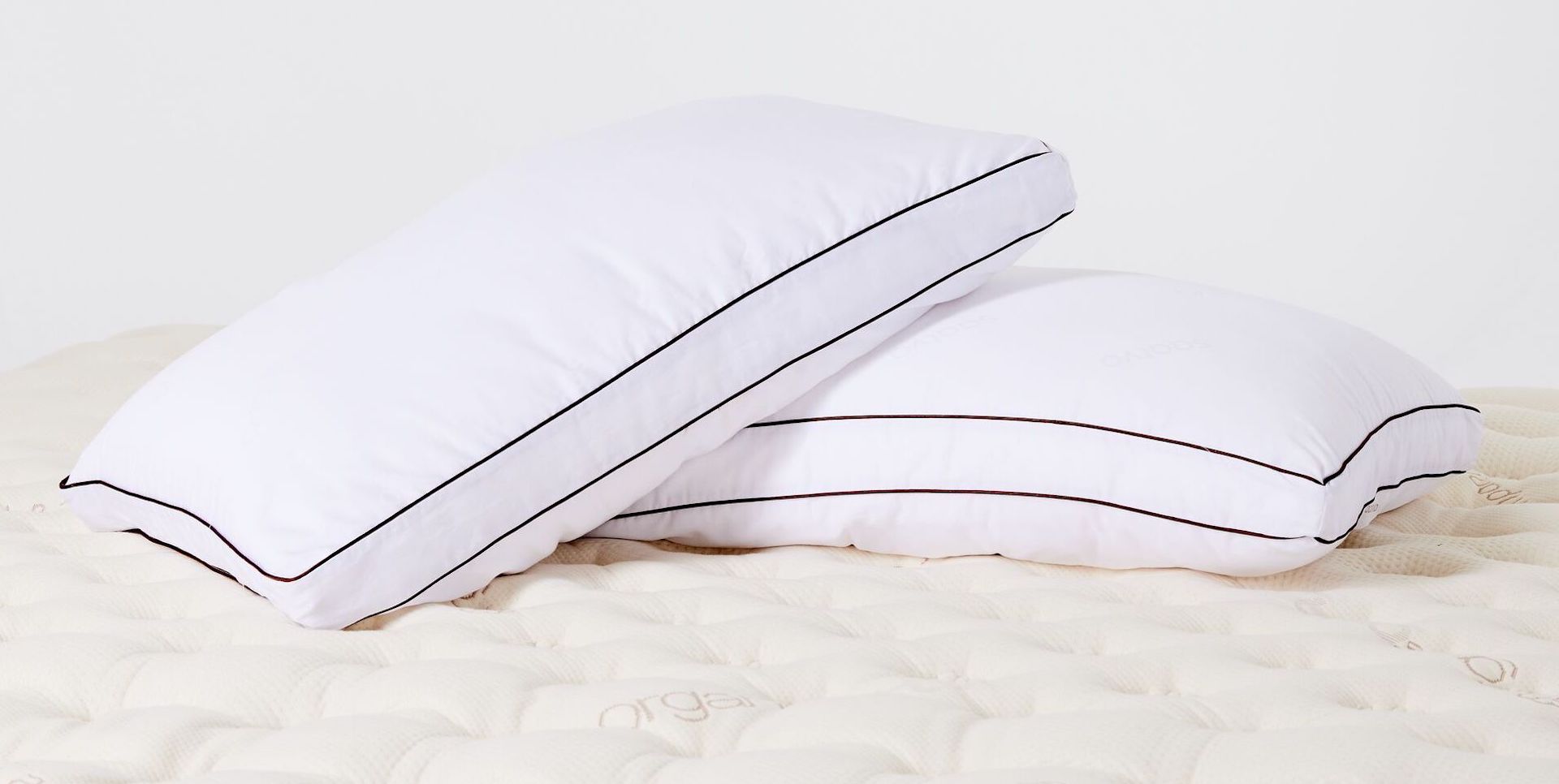

Articles
How To Position Pillows
Modified: October 18, 2024
Learn how to position pillows for better sleep and comfort. Our articles provide step-by-step guides and tips on finding the best pillow arrangement to alleviate pain and promote relaxation.
(Many of the links in this article redirect to a specific reviewed product. Your purchase of these products through affiliate links helps to generate commission for Storables.com, at no extra cost. Learn more)
Introduction
In today’s fast-paced world, getting a good night’s sleep is more important than ever. And one often overlooked factor in achieving quality sleep is pillow positioning. The way you position your pillows can significantly impact the comfort and support you experience while sleeping or even sitting and lounging.
Choosing the right pillows is the first step towards optimizing your sleep posture. A pillow that is too flat or too firm can lead to neck and back pain, while the right pillow can offer the necessary support and alignment for a restful night’s sleep.
In this article, we will explore the importance of pillow positioning and provide you with helpful tips on how to position your pillows for optimal comfort and support, whether you are a back, side, or stomach sleeper. We will also discuss using pillows for additional support and comfort while sitting or lounging.
So, if you want to wake up feeling refreshed and rejuvenated, join us as we dive into the world of pillow positioning and uncover the secrets to a blissful sleep.
Key Takeaways:
- Choose the right pillows and position them strategically to optimize sleep quality, prevent discomfort, and support proper spinal alignment based on your sleep position and individual needs.
- Pillows aren’t just for sleeping – strategically position them for back, neck, and leg support to enhance comfort and maintain proper posture while sitting or lounging. Experiment with different sizes and shapes for ultimate relaxation.
Read more: How To Position Pillows For Side Sleepers
Choosing the Right Pillows
Before we delve into the art of pillow positioning, it is crucial to ensure that you have the right pillows for your needs. The right pillow can make all the difference in your sleep quality and overall comfort.
When selecting pillows, consider the following factors:
- Material: Pillows come in a variety of materials, including memory foam, down, feathers, polyester, and more. Each material offers different levels of support and comfort, so choose one that suits your preferences and any specific needs you may have, such as allergies or neck pain.
- Firmness: The level of firmness you prefer in a pillow depends on your sleep position and personal preference. Back sleepers generally benefit from a medium-firm pillow that supports the neck and maintains proper alignment. Side sleepers may need a firmer pillow to keep the head and neck straight. Stomach sleepers, on the other hand, typically require a softer, flatter pillow to prevent strain on the neck.
- Size: Pillows are available in various sizes, including standard, queen, and king. Choose a size that matches your bed and body proportions for optimal comfort.
- Quality: Investing in high-quality pillows can significantly impact their durability and overall performance. Look for pillows with a reputation for longevity and good customer reviews.
Remember, the right pillow for you might not be the same as someone else’s. Consider your individual needs and preferences when making your selection.
Once you have chosen the pillows that are best suited to your needs, it’s time to focus on how to position them to maximize their benefits. Let’s explore pillow positioning techniques for different sleep positions in the following sections.
Pillow Placement for Sleeping
When it comes to pillow placement for sleeping, the goal is to maintain proper spinal alignment and provide adequate support to prevent any discomfort or strain on your neck and back. The position you sleep in will determine the specific pillow placement techniques that work best for you.
Here are some general pillow placement guidelines for different sleep positions:
Pillow Positioning for Back Sleepers
Back sleepers should aim to keep their head, neck, and spine properly aligned. To achieve this, place a medium-firm pillow under your head, ensuring that it supports the natural curve of your neck without pushing your head too far forward. Consider using an additional small pillow or a rolled-up towel under the curve of your lower back for added support.
Pillow Positioning for Side Sleepers
Side sleepers often benefit from using a firm pillow to maintain a neutral position for the head and neck. Place the pillow between your shoulder and ear, allowing your head to rest comfortably without tilting or sinking too much. For added support, you can also position a pillow between your knees to align your hips and reduce strain on the lower back.
Pillow Positioning for Stomach Sleepers
Stomach sleeping is generally not recommended as it can put strain on the neck and spine. However, if you prefer this sleeping position, opt for a soft, thin pillow to minimize any strain. Consider using no pillow at all or placing a pillow under your pelvis to help maintain a more neutral spinal alignment.
Remember, these are general guidelines, and personal preference may vary. It’s important to find the pillow placement that feels most comfortable and supports your individual sleep needs.
Now that we’ve covered pillow placement for sleeping, let’s move on to using pillows for additional support and comfort in various sitting or lounging positions.
Pillow Positioning for Back Sleepers
Sleeping on your back is considered one of the best positions for spinal alignment. To optimize your comfort and support as a back sleeper, proper pillow positioning is crucial.
Supporting the Head and Neck
When you sleep on your back, it’s important to find a pillow that adequately supports the natural curve of your neck without pushing your head too far forward. A medium-firm pillow is typically the best option for back sleepers.
Place the pillow under your head, ensuring that it cradles your neck and aligns with the natural curvature of your spine. This allows your head to rest in a neutral position, reducing the risk of strain or discomfort.
Adding Support for the Lower Back
While back sleeping naturally helps align your spine, some back sleepers may benefit from additional support for the lower back area.
You can achieve this by using a small pillow or a rolled-up towel placed under the curve of your lower back. This extra support helps maintain the natural inward curve of the lower back (lumbar spine) and prevents it from flattening or straining during sleep.
By positioning your pillows in this way, you can create a comfortable and supportive sleep environment for back sleepers, promoting proper spinal alignment and reducing the risk of waking up with a stiff neck or back pain.
Now that we’ve explored pillow positioning for back sleepers, let’s move on to the next sleep position: side sleeping.
Read more: Where To Position Home Security Cameras
Pillow Positioning for Side Sleepers
Side sleeping is a common sleep position that offers several benefits, including improved breathing and reduced acid reflux. As a side sleeper, proper pillow positioning is key to ensuring optimal comfort and support for your head, neck, and spine.
Choosing the Right Pillow
Side sleepers generally benefit from using a firm or medium-firm pillow to maintain proper alignment of the head and neck. A pillow with ample loft and support is essential to ensure that your head is level with your spine.
Place the pillow between your shoulder and ear, allowing your head to rest comfortably on the pillow without tilting or sinking. The goal is to maintain a neutral position where your head is aligned with your spine, minimizing the risk of neck and shoulder pain.
Additional Support for the Hips and Knees
In addition to supporting the head and neck, side sleepers can enhance their sleep posture further by positioning pillows to provide support for the hips and knees.
Consider placing a pillow between your knees to maintain proper alignment of your hips and reduce strain on the lower back. This helps alleviate pressure on the hip joints and promotes a more comfortable sleeping position.
By using pillows strategically, side sleepers can ensure that their head, neck, and spine are properly supported, allowing for a restful night’s sleep and minimizing the risk of waking up with any discomfort or pain.
Now that we’ve covered pillow positioning for side sleepers, let’s move on to the next sleep position: stomach sleeping.
Pillow Positioning for Stomach Sleepers
Stomach sleeping is generally not recommended as it can strain the neck, spine, and lower back. However, if you prefer this sleep position, proper pillow positioning can help minimize discomfort and promote better alignment.
Choosing the Right Pillow
For stomach sleepers, it is crucial to opt for a soft, thin pillow. Avoid using pillows that are too thick or firm, as they can lead to excessive neck extension and strain.
Consider using a pillow with minimal loft or even no pillow at all. This allows your head to stay in a more neutral position, reducing the risk of neck and back pain. Alternatively, you may choose to place a very thin pillow under your pelvis to help maintain proper spinal alignment.
Reducing Neck Strain
Another pillow positioning technique for stomach sleepers is to turn your head to the side instead of keeping it in a fully facedown position. This can help alleviate strain on the neck and allow for easier breathing.
Although stomach sleeping is not the most ideal position, using proper pillow positioning techniques can help minimize any negative effects on your neck, spine, and overall comfort.
Remember to listen to your body and explore other sleep positions that promote better alignment and reduce the risk of pain or discomfort. Now that we’ve covered pillow positioning for stomach sleepers, let’s move on to using pillows for support and comfort in sitting or lounging positions.
Using Pillows for Support and Comfort
Pillows are not just for sleep; they can also be incredibly useful for providing support and comfort in various sitting or lounging positions. Whether you’re reading a book, watching TV, or simply relaxing, strategically positioning pillows can help alleviate strain on your back, neck, and joints.
Back Support
If you’re sitting in a chair or on a couch for an extended period, placing a pillow behind your lower back can provide much-needed support. This helps maintain the natural curve of your spine and prevents slouching, which can lead to back pain. Experiment with different pillow sizes and firmness levels to find the right amount of support for your lower back.
Read more: How To Position Outdoor Security Cameras
Neck Support
When watching TV or using electronic devices, it’s common to spend hours with your head tilted forward. This can strain your neck and lead to discomfort. Placing a small pillow or cushion behind your neck can help support it and relieve tension, allowing you to enjoy your leisure activities without discomfort.
Leg Elevation
If you’re dealing with swelling, varicose veins, or circulation issues, elevating your legs can provide relief. Place a pillow or two under your legs while sitting or lying down to raise them above heart level. This promotes better blood flow and can help reduce swelling and discomfort.
Comfort and Relaxation
Pillows can also be used for ultimate relaxation and comfort. Whether you’re sitting or lying down, arranging pillows around you can create a cozy and supportive environment. Consider building a pillow fort, propping pillows under your arms, or using them to create a comfortable reclined position. The goal is to find a configuration that allows you to fully relax and unwind.
Remember, using pillows for support and comfort is about personal customization. Play around with different pillow positions and arrangements until you find what works best for your individual needs and preferences.
Now that we’ve explored the various ways to use pillows for support and comfort, let’s conclude our journey into the world of pillow positioning.
Pillow Positioning for Sitting or Lounging
When it comes to sitting or lounging, pillow positioning can greatly enhance your comfort and support. Whether you’re working at a desk, relaxing on a couch, or enjoying a movie marathon, strategically placing pillows can help alleviate strain on your back, neck, and posture.
Supporting the Lower Back
If you spend a significant amount of time sitting at a desk or working on a computer, it’s essential to maintain proper posture and support your lower back. Placing a lumbar pillow or a rolled-up towel behind your lower back can help maintain the natural curve of your spine and prevent slouching. This additional support can alleviate back pain and promote better posture throughout the day.
Comfortable Seating
If you have a favorite chair or couch where you spend a lot of time lounging, using pillows can help create a more comfortable seating experience. Place pillows strategically to support your back, neck, and arms, ensuring that you’re in a relaxed and ergonomic position. Experiment with different pillow sizes and firmness levels to find the perfect combination that provides optimal comfort and support.
Creating a Cozy Nest
If you want to create the ultimate lounging experience, consider building a cozy nest of pillows. Arrange pillows around you, propping them up behind your back, under your arms, and even beneath your legs. This can create a comfortable and supportive cocoon-like environment where you can fully relax and unwind.
Versatile Pillow Uses
Remember that pillows are not limited to traditional shapes and sizes. You can use body pillows, wedge pillows, or even decorative accent pillows to add both style and support to your sitting or lounging area. Get creative with your pillow arrangement and don’t be afraid to experiment until you find what works best for your comfort and relaxation needs.
By utilizing pillows for sitting and lounging, you can optimize your comfort, maintain proper posture, and reduce the risk of discomfort or strain on your body. Incorporating pillows into your everyday routine can elevate your sitting and lounging experience to a whole new level.
Now that we’ve covered pillow positioning for sitting or lounging, it’s time to wrap up our comprehensive guide on how to position pillows effectively.
Conclusion
Proper pillow positioning is essential for achieving optimal comfort and support during sleep, as well as while sitting or lounging. By choosing the right pillows and strategically placing them, you can significantly improve your overall sleep quality, prevent discomfort, and support proper spinal alignment.
For sleepers, pillow placement varies depending on your sleep position. Back sleepers should use a medium-firm pillow to support the natural curve of the neck, while side sleepers benefit from a firmer pillow to maintain proper alignment. Stomach sleepers should opt for a soft, thin pillow or even forgo one altogether to minimize strain on the neck and back.
Pillows can also enhance your sitting or lounging experience. Using pillows for back and neck support, leg elevation, and overall comfort can alleviate strain on your body and promote better posture throughout the day.
Remember to choose pillows that suit your individual needs, such as material, firmness, and size. Investing in high-quality pillows can make a significant difference in their durability and overall performance.
Whether you’re sleeping or enjoying leisure time, don’t hesitate to get creative with the arrangement and types of pillows you use. Experiment with different sizes, shapes, and positions until you find what works best for you.
In conclusion, pillow positioning plays a crucial role in enhancing your sleep quality, supporting your body, and promoting overall well-being. By paying attention to the positioning and placement of your pillows, you can create a comfortable and supportive environment for a restful night’s sleep and a relaxed lounging experience.
So, take the time to choose your pillows wisely and explore the various ways you can use them to optimize your comfort. Your body will thank you for it, and you’ll wake up feeling refreshed and ready to take on the day.
Frequently Asked Questions about How To Position Pillows
Was this page helpful?
At Storables.com, we guarantee accurate and reliable information. Our content, validated by Expert Board Contributors, is crafted following stringent Editorial Policies. We're committed to providing you with well-researched, expert-backed insights for all your informational needs.

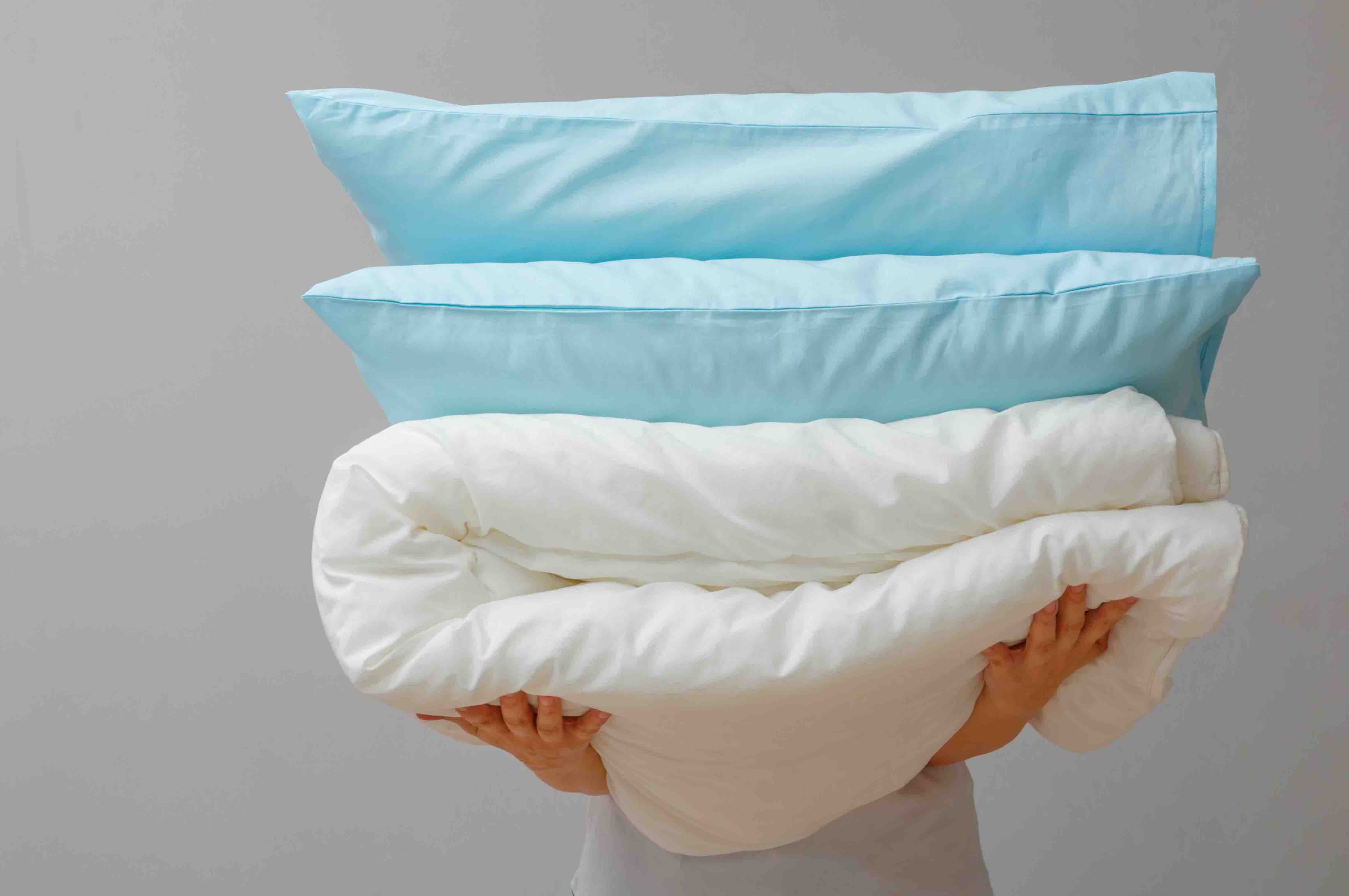

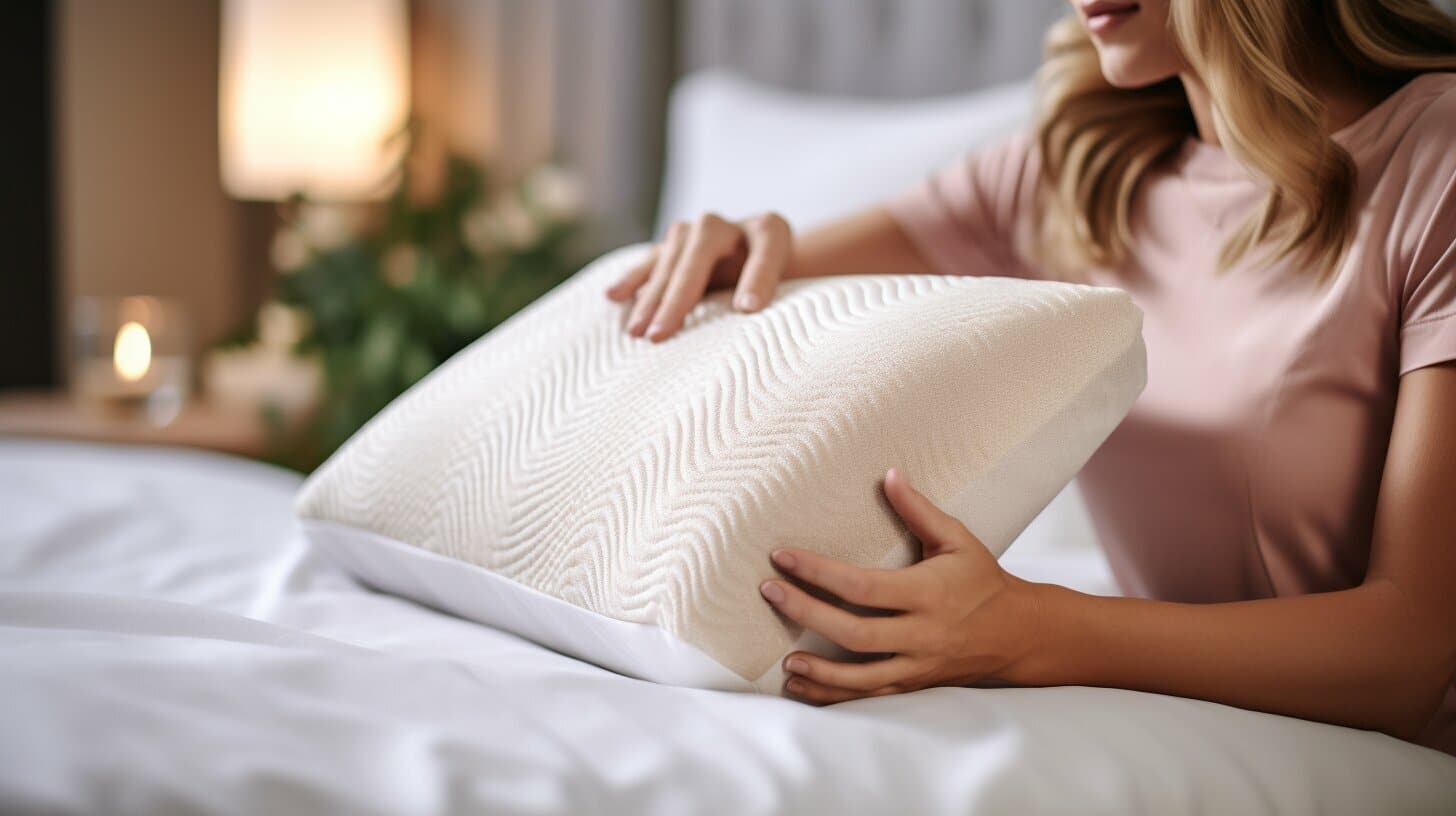

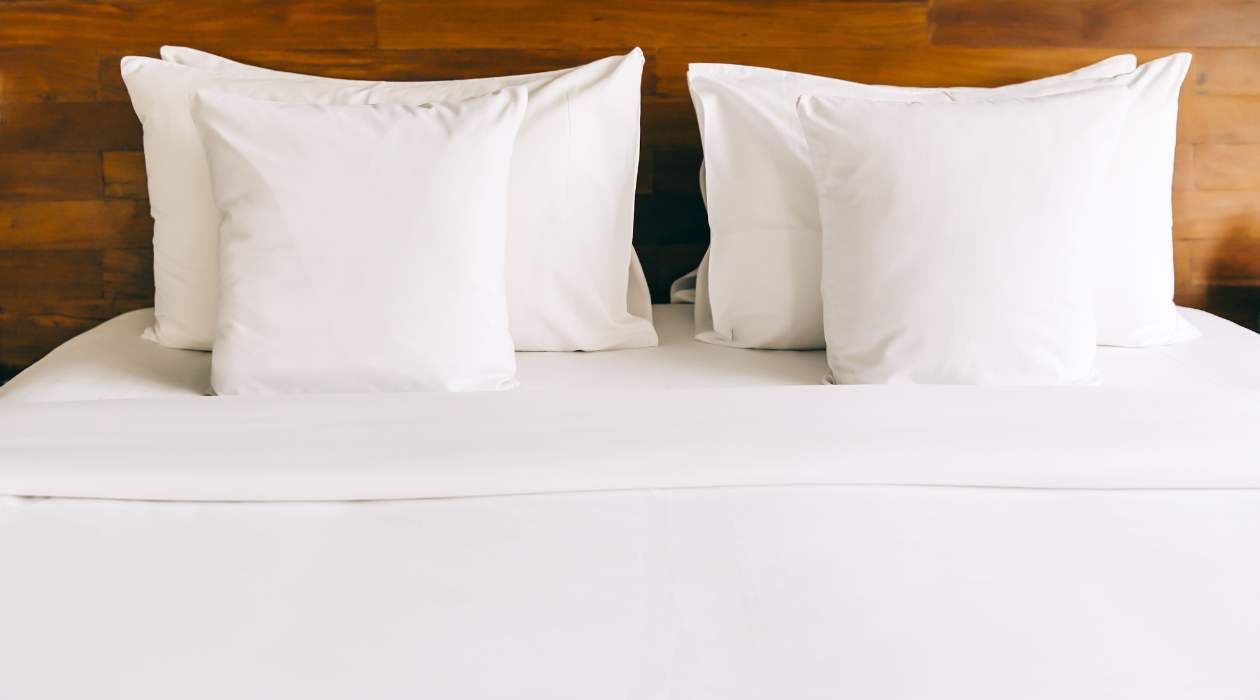

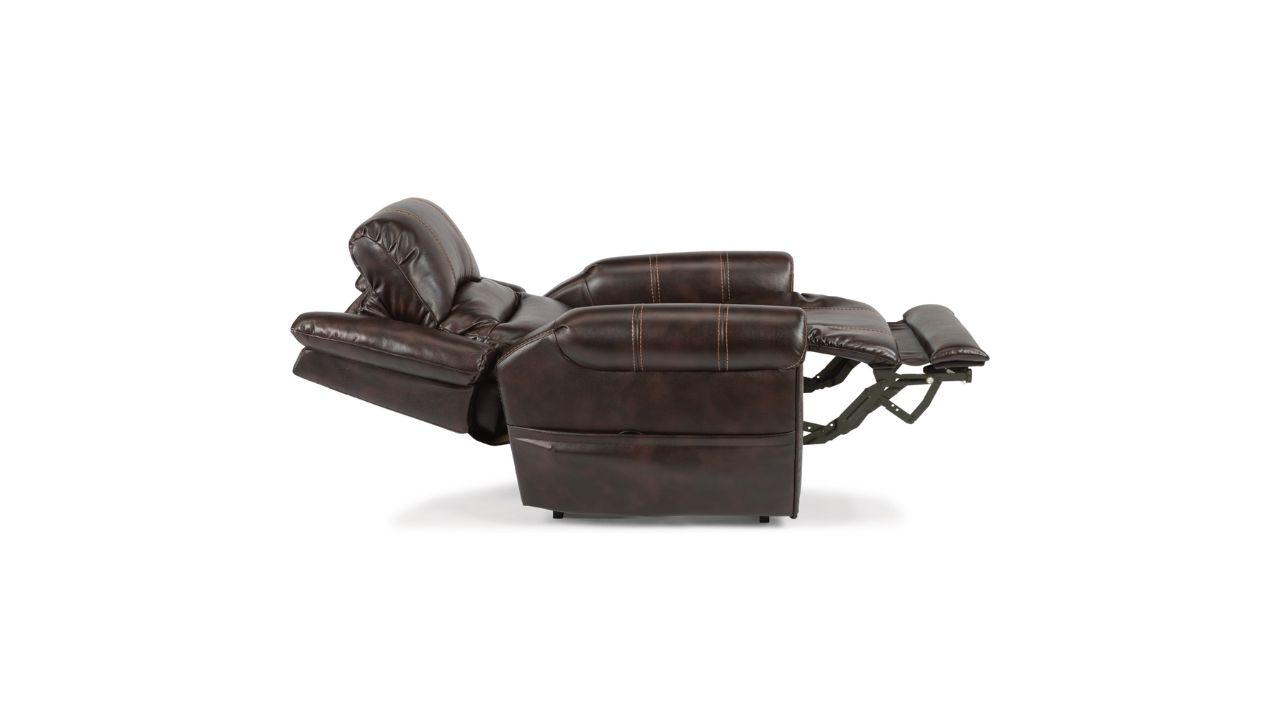


0 thoughts on “How To Position Pillows”